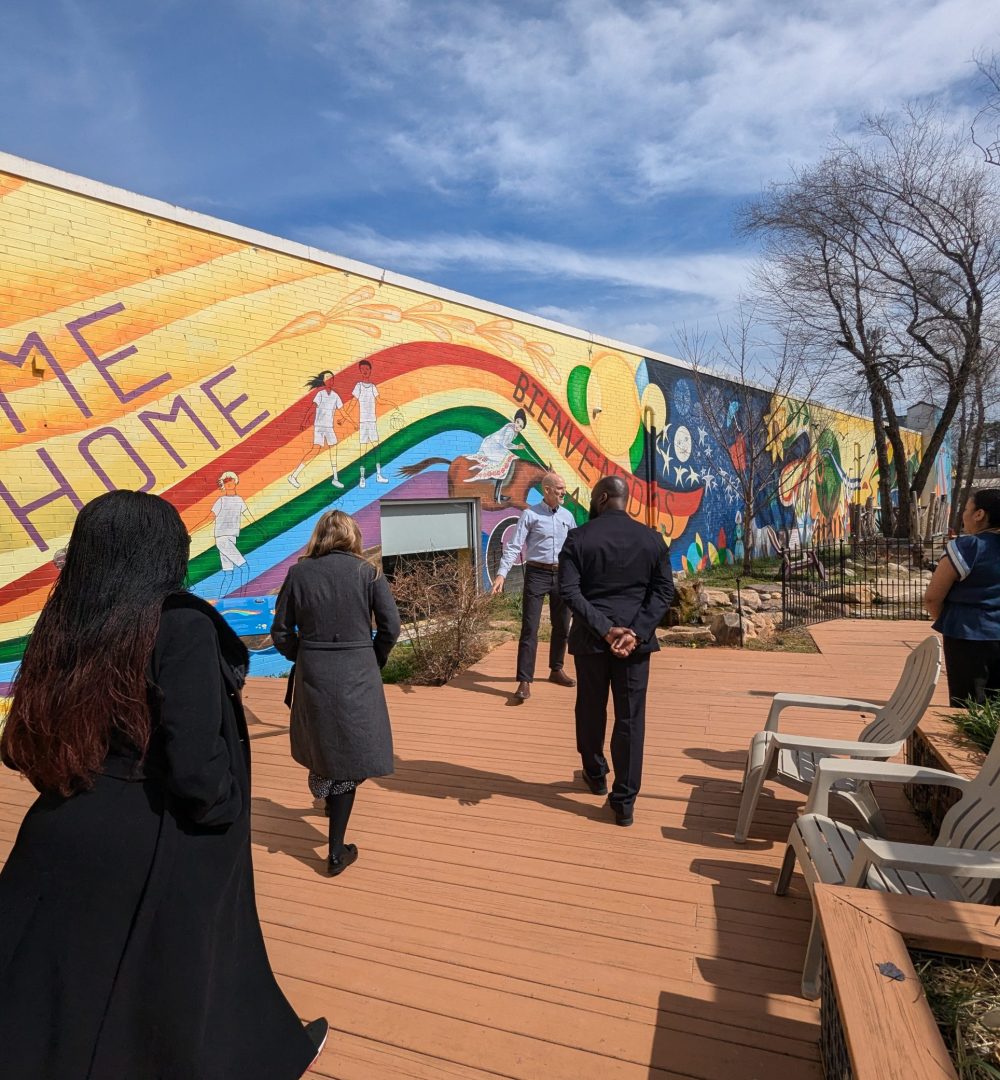
Lessons from the USA: Communities in Control
Our Assistant Director of Strategy and Policy, Sam Rodger, shares insights from a recent delegation to the USA, where he engaged with a range of communities, officials, and academics on the challenges of tackling race inequity.
Last month, I joined a UK Government delegation to the USA. It was a fact-finding mission, aimed at exchanging learning between the two countries on the topic of ethnic health inequalities. It was a fascinating trip, made more so by the fact that it was conducted in the shadow of President Trump’s war on what he calls “DEI” (diversity, equality, and inclusion). In one of his first moves as president, Trump signed an executive order which described diversity, equity, and inclusion initiatives as “illegal and immoral discrimination programs” and ordered all such government-funded programmes be terminated.
We arrived in the states less than six weeks later, a time of great uncertainty for those in the equity sector. For obvious reasons, we couldn’t secure meetings with any federal employees but, instead, met with a range of state- and city-level officials, academics, and members of marginalised communities, all of whom, in their own way, are quickly filling the void created by the withdrawal of national support.
In this blog, I’ll share some of my learning from my time in the USA and highlight lessons that can be applied to the UK context.
Communities in control
Before arriving in the states, I’ll admit that I expected healthcare services to be lagging well behind the NHS in almost all areas. Indeed, the privatised and fragmented nature of the system leaves enormous gaps in terms of access to healthcare, and the sheer scale of the place leaves vast geographical areas with scant provision. Even so, we saw instances where precisely this lack of coverage has spurred communities and health departments to adopt progressive approaches to community participation.
We started our trip in North Carolina, a state of around 10 million people where, I was shocked to learn, around a quarter of the population rely on private wells for their water supply, a number rising sharply in rural communities. We visited rural food deserts where access to nutritional food was almost impossible, and public health centres were straining under the demand of uninsured and under-insured communities.
We were also lucky enough to visit El Futuro, a non-profit organisation providing mental health services to Latino/Latine communities in the area. It was here that we saw genuine co-production in action. Occupying a site on a retail park, El Futuro has been designed from top to bottom with the community in mind. Visitors are greeted with fresh coffee and sweet bread on arrival; each consultation room has been painted and decorated based on community feedback; and, wrapping around the building, there’s a community designed garden with running water and a mural. As well as providing mental health services, El Futuro is also a place of celebration and transformation. They host community gatherings, and they told us that, in line with the desires of the community, they don’t focus on a person’s complaints, but instead ask them, “what are your dreams?”.
The success of El Futuro derives directly from putting the community at the heart of its decision making. In some ways, the lack of universal access to such services is the very thing that has driven closer ties to the community. Where provision doesn’t exist, communities have taken their care into their own hands, providing much needed care in a way that is truly culturally adapted. One of the most impactful initiatives El Futuro have is a train-to-train initiative whereby community members are given 10-week training courses to build mental health capacity in their local communities. There’s a lot we could learn in the NHS about this level of cultural safety and perhaps the need to not only work with communities but also be willing to delegate more power to them.
Treating the community as a patient
While in North Carolina, we also visited a public health authority in the north of the state, Granville Vance Public Health, a service that states its purpose is to treat the whole community as its patient. Due to the nature of the US healthcare system, public health departments often have a broader remit than we’re used to in the UK. As well as safeguarding population health and reducing inequalities, Granville Vance also provides myriad healthcare services to older people and those on lower incomes who can access federal insurance programmes Medicare and Medicaid. These services include both medical and dental primary care services, maternal and child health, immunisations, and nutritional services.
In driving around the twinned counties, I was struck by the diversity of the area. Granville County has a combined Black, Hispanic, Indigenous and Asian population of almost 40%. In neighbouring Vance County, this rises to 58%. We drove down broad tree-lined streets with grand homes, before, literally on the other side of a train-track, visiting deeply deprived towns and villages.
To meet the needs of these diverse communities, the public health department carries out a Community Health Assessment every 3-4 years, looking at multiple data sources to decide what to prioritise in the coming period. As well as academic and population level data, the assessment also draws on direct engagement with the community, allowing them to influence and determine their own health needs and drive the services they want to see. By way of a slightly alarming example, we were told by one primary care practitioner that, since the banning of abortion in the state, they have seen a significant increase in requests for vasectomy appointments.
As Integrated Care Boards in the UK start to take a greater role in managing the needs of their local population, there’s a lot that can be learned from this approach in terms of catering public health services to the self-reported needs of the community through consistent and structured engagement.
